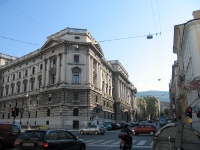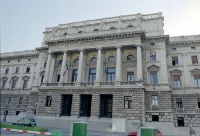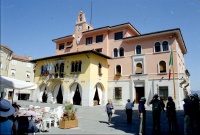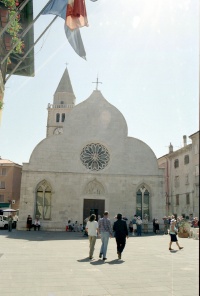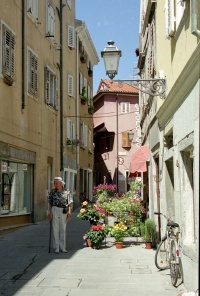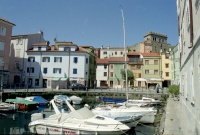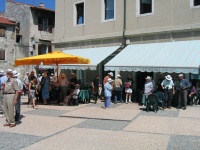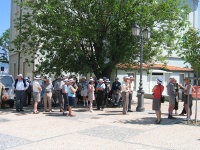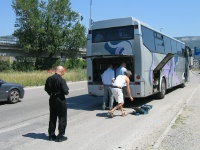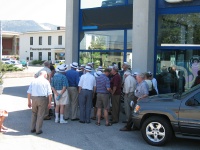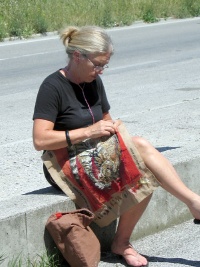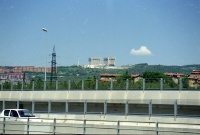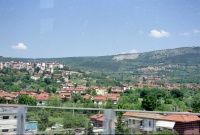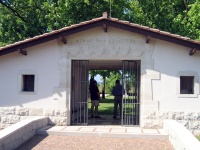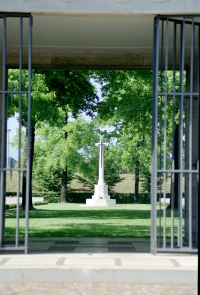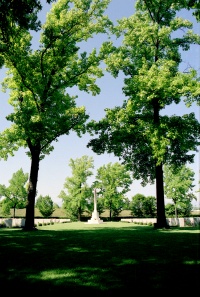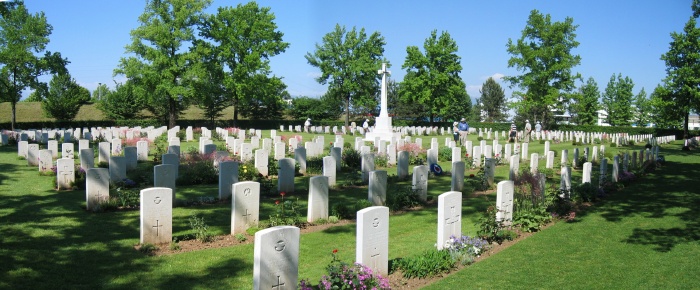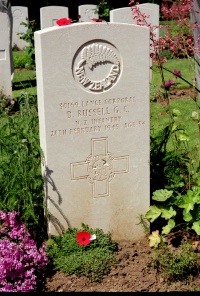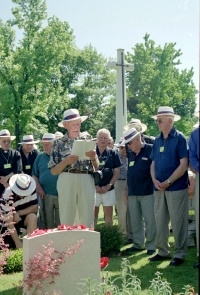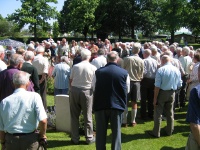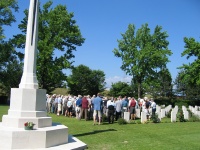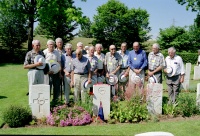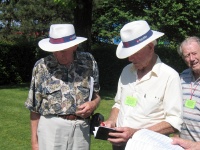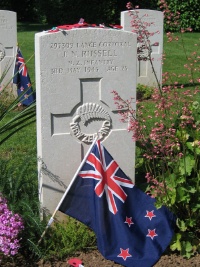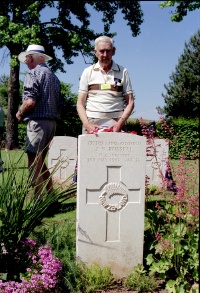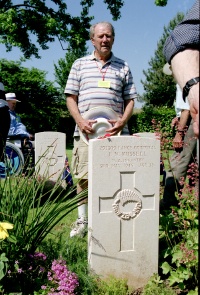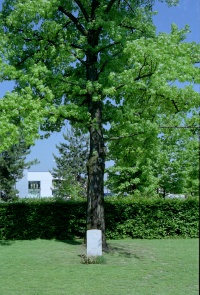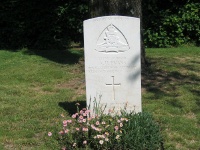WEEK 1DAY 7 Friday 27 May 2005The Tribunale Building and Departure from TriesteFor Colonel Donald and the New Zealanders who first arrived in Trieste, the Tribunale (Law Courts) building was occupied by belligerent SS officers who refused to surrender. To quote the Official History
In his reply to the mayor's address at the Tuesday Reception, Colonel Donald acknowledged the damage he had ordered to the Tribunale and voiced his regret that he had been forced to damage such a magnificent building. He was pleased to see that it had been fully restored. Before the buses departed this morning we walked up to the Tribunale.
There is more information about the Tribunale, and more photographs of its damage here. MuggiaWe boarded the buses at 0920, departed at 0945 for Muggia, a small ancient town beside the border with Slovenia. Apparently some of the New Zealand troops had been billeted there prior to their return home. Many of us found the visit to Muggia rather disappointing and somewhat pointless - The two hours would have been better spent visiting Ponte di Piave where we had high expectations of visiting the local cemetery and viewing the brass plaque to Russell who had been awarded the George Cross for bravery here. The plaque had been funded a few years prior by New Zealanders, many of whom were on this tour. But this highlight of the tour was not to be.
Soon after departure from Muggia, the air conditioning on Bus 1 (our bus!) broke down and the temperature in the bus climbed to dangerous levels. We stopped beside the road for repairs, effectively preventing any possible diversion to Ponte di Piave later in the day..
Once repaired we were off towards Udine, passing around the outskirts of Trieste, then climbing the hills to the northwest. As we left Trieste, we had some final views of the hills;
Udine CemeteryUdine Military Cemetery, a few miles north of Trieste is where many of the Commonwealth troops killed in the area are buried. Udine was the first cemetery our tour had reached, and for many it was their first opportunity to visit a war cemetery maintained by the Commonwealth War Graves Commission. Everybody was impressed with the upkeep of the cemeteries, the neat rows, the mowed grass and the well-tended roses and other flowers.
At Udine we were especially interested in two graves - both named Russell, both Lance Corporals, both from the 22nd Battalion and both buried in the same row. David Russell GCDavid Russell, as an escaped prisoner of war, was shot by the Germans on 28 February 1945 at Ponte di Piave. He was buried in that town, but his body was later moved to Udine. He was awarded the George Cross for his bravery in the face of the Germans - the only New Zealander to receive this honour in the war. There is more information and further photographs here. John Russell:John Russell was killed by a Yugoslav mortar while A Company was trying to negotiate the surrender of the German Garrison at Villa Opicina, in Trieste. His death on 3 May 1945 is widely regarded as the first casualty of the Cold War, the Germans having surrendered on 2 May. To quote from the Official History:
An Unusual Headstone at UdineSet to one side of the Udine
Cemetery, at the foot of a solitary
tree is a lone headstone. The CWGC description of Udine refers to this
grave
thus:
Roll of Honour of 22nd Battalion interred at Udine
And on to Venice...The drive from Udine to Venice was uneventful and we arrived at our Hotel (ex-Ramada Inn) by late afternoon. The hotel had seen better days, and it was obvious why Ramada had on-sold the hotel. Dinner was not one of the better meals of the tour - Green Pea and pasta soup, roast chicken with small potatoes and cauliflower. Dessert was apple cake. Go to Next Day in Diary - Saturday Go to Previous Day in Diary - Thursday Last updated: 20/09/2010 |
|||||||||||||||||||||||||||||||||||||||||||||||||||||||||||||||||||||||||||||||||||||||||||||
